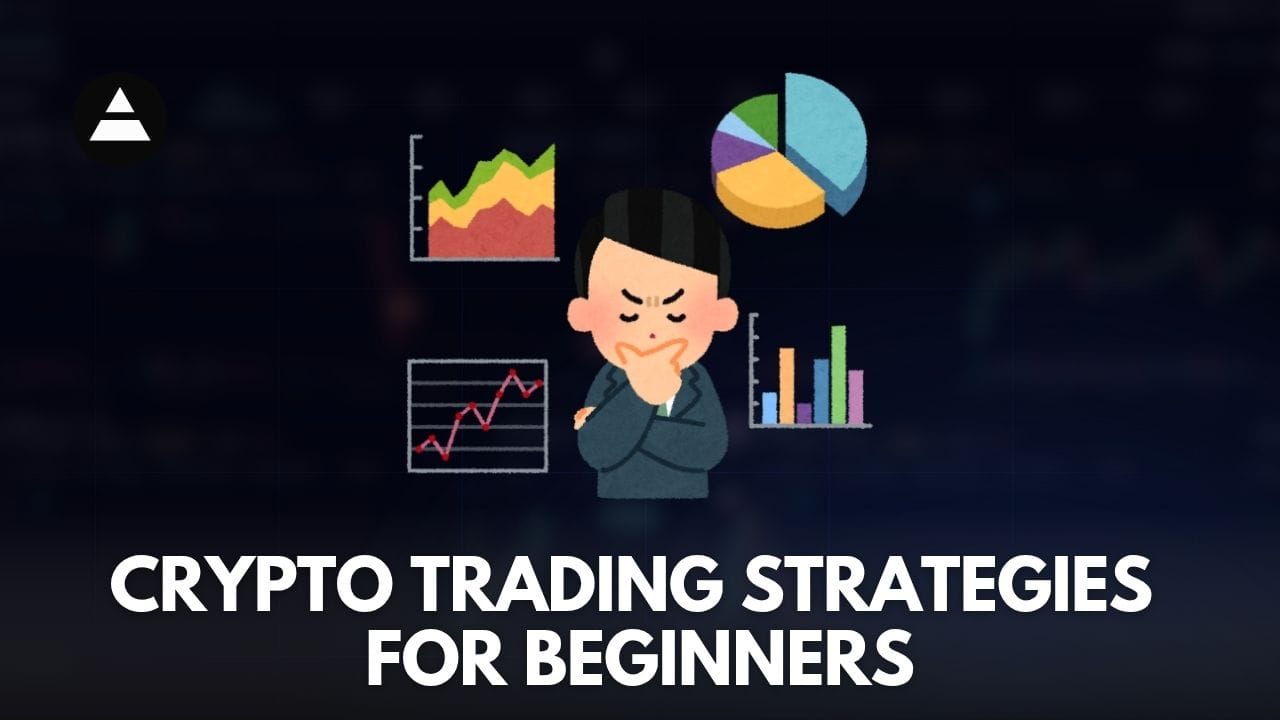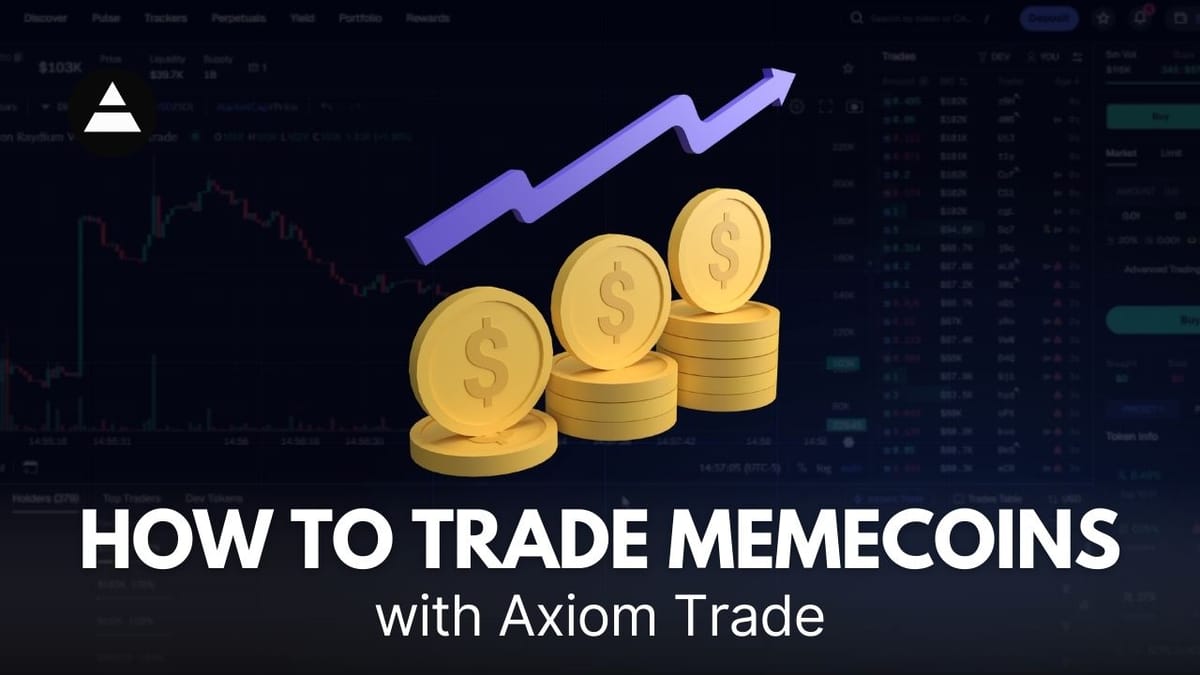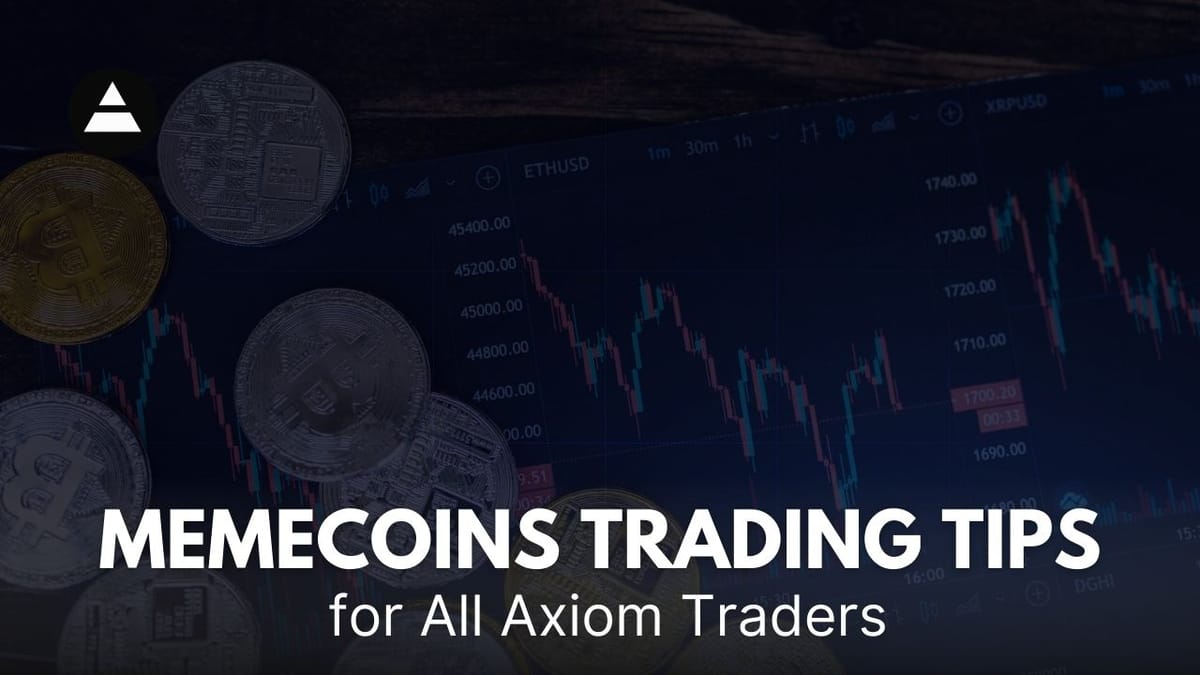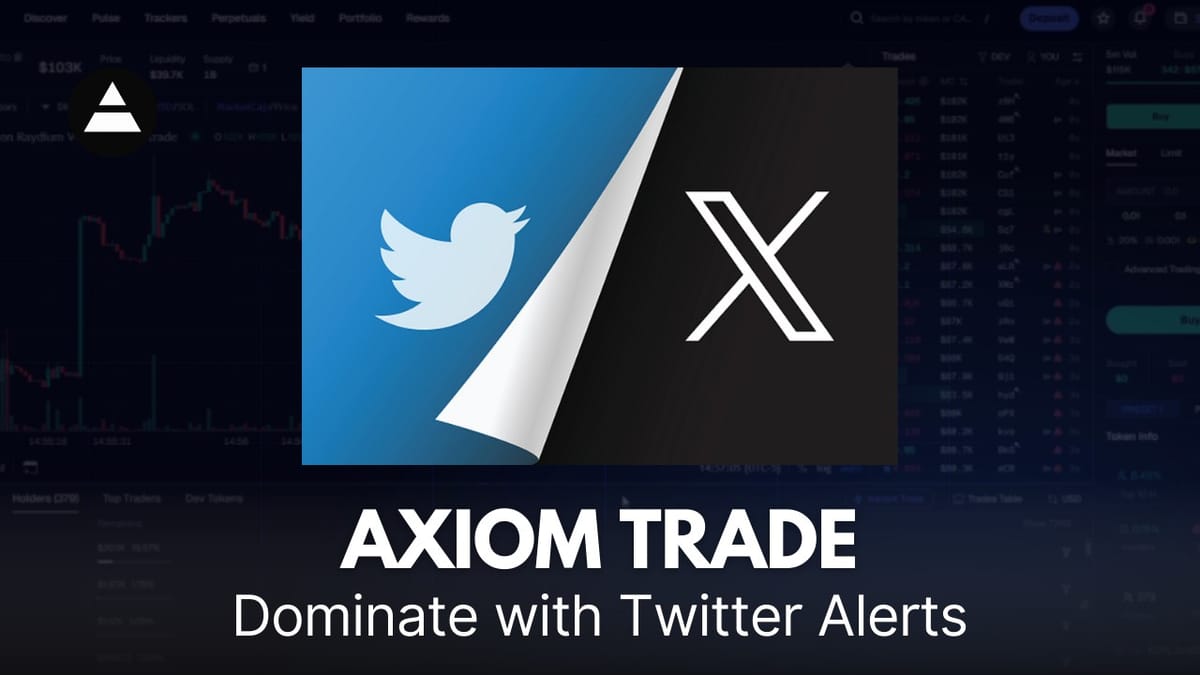Crypto Trading Strategies for Beginners

Thinking about getting into crypto trading?
It can seem a bit much at first, with all the talk of charts and different coins.
But honestly, it's not as scary as it sounds.
You just need a clear plan and some basic know-how.
This guide is here to break down crypto trading strategies for beginners, making it simple to get started and hopefully avoid some common beginner mistakes.
We'll cover the basics, the tools you'll need, and how to keep your money safe.
Key Takeaways
- Understand what crypto trading is and learn the basic terms you'll hear a lot.
- Get the right tools, like a safe wallet and a good trading platform.
- Learn simple trading methods like spot trading and using limit orders.
- Always think about protecting your money by managing risks and spreading out your investments.
- Keep learning about new ways to trade and stay safe online.
Understanding Crypto Trading Fundamentals
Getting into crypto trading can feel like stepping into a whole new world, and that's okay.
It's about understanding the basics before you start putting your money into it.
Think of it like learning to drive; you wouldn't just jump on the highway without knowing what the pedals do, right?
Crypto trading is similar.
You need to grasp some core ideas to make informed decisions.

What is Cryptocurrency Trading?
At its heart, cryptocurrency trading is the act of buying and selling digital currencies like Bitcoin or Ethereum.
People do this hoping to make a profit from the price changes.
The crypto market is known for being pretty volatile, meaning prices can swing up and down quite a bit, and fast.
This volatility is what creates opportunities for traders, but it also means there's risk involved.
You're essentially trying to buy low and sell high, or sometimes the other way around if you're shorting, but for beginners, focusing on buying low and selling high is a good starting point.
It's a market that operates 24/7, unlike traditional stock markets, so there's always something happening.
You can learn more about what cryptocurrency trading entails on this article.
Key Terminology for New Traders
Before you start, you'll hear a lot of terms thrown around. Knowing these will make things much clearer:
- Bull Market: A period where prices are generally rising.
- Bear Market: A period where prices are generally falling.
- Volatility: How much and how quickly the price of an asset changes.
- Liquidity: How easily an asset can be bought or sold without affecting its price. High liquidity is generally good.
- Wallet: A digital place where you store your cryptocurrencies. It's like your bank account for crypto.
- Exchange: A platform where you can buy, sell, and trade cryptocurrencies.
Setting Realistic Trading Goals
It's super important to set goals that make sense.
Don't expect to get rich overnight.
Many new traders come in with unrealistic expectations, which can lead to disappointment or risky decisions.
Instead, focus on learning and gradual growth.
Maybe your first goal is to understand how to place a trade without errors, or to learn how to read basic price charts.
Setting achievable goals helps you stay motivated and build confidence as you progress.
For instance, aiming to learn about one new trading strategy per month is a more realistic objective than aiming for a specific profit percentage in the first week.
Starting with a clear plan and manageable expectations is key to a more positive trading experience. It's about the journey of learning and adapting, not just the immediate outcome.
Essential Tools for Crypto Traders
Getting started in crypto trading means you'll need a few things to help you out.
Think of these as your basic toolkit.
You wouldn't go camping without a tent, right?
Same idea here.
Choosing a Secure Crypto Wallet
First off, you need a place to keep your digital coins safe.
A crypto wallet is like your personal bank vault for crypto.
There are different kinds, but for beginners, a non-custodial wallet is a good way to go.
This means you're in charge of your private keys, which is super important for security.
You always want to be the one controlling your assets.
Many platforms, like Axiom Exchange, offer integrated wallets that are designed with security in mind, often using top-tier measures to keep your funds safe.
It's a good idea to look into wallets that support the blockchains you plan to trade on.
You can buy crypto through some platforms like Axiom without needing to do a full KYC process, up to a certain limit each week, which is pretty convenient when you're just starting out.
Navigating Trading Platforms
Once you've got your wallet sorted, you'll need a place to actually trade.
This is where trading platforms come in.
These are the marketplaces where you can buy and sell different cryptocurrencies.
Some platforms are more beginner-friendly than others.
You'll want one that's easy to understand, has clear pricing, and offers the coins you're interested in.
Axiom is a platform designed to be your all-in-one trading app, handling everything from buying and selling to tracking your wallets.
They aim to be fast and have features that help both new and experienced traders.
It's worth checking out platforms that integrate with decentralized protocols, as this means your transactions are always on the blockchain and under your control.
Utilizing Market Analysis Tools
To make smart trading decisions, you need information.
Market analysis tools help you understand what's happening with prices and trends.
This can include charting software that shows price history, volume data, and other indicators.
Some tools can even help you spot patterns or unusual trading activity.
For instance, understanding things like transaction bundles, where multiple buys happen very close together in the same block, can give you an edge.
Tools that can identify these bundles, like the ones offered by Axiom, help you see potential market movements more clearly.
Having access to reliable data is key to making informed trades.
You might also look into tools that monitor social media, like Twitter, for sentiment analysis, as this can sometimes predict price changes, especially with certain types of coins.
The Axiom Crypto Trading Bot is an example of a tool that can help automate some of these analysis tasks.
Developing Your First Crypto Trading Strategy
Alright, so you've got the basics down and you're ready to actually start trading.
That's awesome!
But before you jump in headfirst, you really need a plan.
Think of it like this: you wouldn't go on a road trip without a map, right?
Trading without a strategy is pretty much the same thing.
It’s about having a clear idea of what you want to achieve and how you plan to get there.
Introduction to Trading Strategies
So, what exactly is a trading strategy?
Simply put, it's a set of rules or a plan that you follow when you trade.
This plan helps you decide when to buy, when to sell, and how much to risk.
Having a strategy helps you stay disciplined and avoid making emotional decisions, which, trust me, can be a real problem in the fast-paced crypto world.
It’s about being methodical.
You need a well-defined strategy and a dedicated crypto trading account to start trading cryptocurrency.
This ensures a structured approach to navigating the crypto market.
There are tons of different strategies out there, from day trading to swing trading, and each has its own pros and cons.
The key is finding one that fits your personality, your risk tolerance, and your available time.
Don't feel pressured to pick the most complex one; simpler can often be better when you're starting out.
Spot Trading Basics
Let's talk about spot trading.
This is probably the most straightforward way to trade crypto.
When you spot trade, you're buying an asset with the intention of owning it outright.
If you buy Bitcoin on the spot market, you actually own that Bitcoin.
You can hold it, sell it later, or even transfer it to your wallet.
The price you see is the price you pay (plus any fees, of course).
It’s a direct transaction.
You're not dealing with contracts or futures, just buying and selling the actual cryptocurrency.
This is a great place to start because it’s easy to understand.
You can get started with spot buys on platforms like Axiom Trade, which makes the process pretty simple.
Understanding Limit Orders
Now, when you're trading, you'll often see two main types of orders: market orders and limit orders.
A market order is simple: you buy or sell immediately at the best available price.
But what if the price isn't quite what you want?
That's where limit orders come in.
A limit order lets you set a specific price at which you're willing to buy or sell.
For example, if Bitcoin is trading at $30,000, but you only want to buy it if it drops to $29,500, you can place a limit buy order at $29,500.
Your order will only execute if the price reaches that level.
Similarly, you can set a limit sell order to sell at a price higher than the current market price.
This gives you more control over your entry and exit points, which is super important for managing your trades effectively.
Many platforms, including Axiom Trade, support limit orders, giving you that extra control.
Managing Risk in Crypto Trading
Okay, so you've got a handle on the basics, maybe you've even made a few trades.
That's awesome!
But let's talk about something super important: keeping your money safe.
Crypto is wild, and things can change fast.
You absolutely need a plan to protect yourself from big losses.
It's not about being scared; it's about being smart.
The Importance of Risk Management
Think of risk management like wearing a seatbelt.
You hope you never need it, but if you do, it can save you.
In crypto, this means having strategies in place before you trade to limit how much you could lose if the market goes south.
Without it, you're basically gambling, and that's not a good way to build wealth.
It's about making sure one bad trade doesn't wipe out your whole account.
You want to be in this for the long haul, right?
That means protecting your capital.
Setting Stop-Loss Orders
This is one of the most basic, yet effective, tools you have.
A stop-loss order is an instruction you give to your exchange to sell a cryptocurrency if it drops to a certain price.
Let's say you buy Bitcoin at $30,000, and you decide you can't afford to lose more than 10%.
You'd set a stop-loss order at $27,000.
If the price hits that level, your Bitcoin will automatically be sold.
This takes the emotion out of it – you don't have to sit there watching the price fall and panic-selling. Platforms like Axiom Trade can help you set these up easily, making sure you stick to your plan.
Diversification of Your Portfolio
Another key strategy is not putting all your eggs in one basket.
If you invest all your money into just one cryptocurrency, and it crashes, you lose everything.
Diversifying means spreading your investments across different types of crypto assets.
Maybe you have some Bitcoin, some Ethereum, and perhaps a smaller amount in a few other promising projects.
This way, if one asset performs poorly, the others might still do well, balancing out your overall results.
It's a way to smooth out the ride.
You can explore different assets and strategies on platforms that help you manage your risks.
Remember, the crypto market is unpredictable. While aiming for profits is natural, prioritizing the preservation of your capital through solid risk management practices is what separates successful traders from those who just get lucky (or unlucky).
It’s also a good idea to regularly review your portfolio and rebalance it if needed.
Markets change, and what was a good allocation a few months ago might not be the best today.
Staying informed and adjusting your strategy is part of the process.
Mastering risk management is key to protecting your investments in this space.
Advanced Trading Concepts for Growth
Once you've got a handle on the basics, you might want to look into some more advanced ways to trade crypto.
This is where things can get interesting, and potentially more profitable, but also riskier.
It's good to know about these options as you grow your trading skills.
Exploring Yield Opportunities
Beyond just buying and selling, you can also earn passive income on your crypto holdings.
Platforms like Axiom Trade make this pretty straightforward.
They often offer ways to stake your assets or provide liquidity, which can earn you interest, sometimes called APY.
It's like getting paid to hold your crypto.
For example, you might see offers for up to 15% APY on certain assets, with the ability to withdraw your funds whenever you need them.
This is a way to grow your portfolio without actively trading every day.
Understanding Transaction Bundles
This is a bit more technical, but it's about how transactions are grouped together.
On blockchains like Solana, multiple transactions can be processed in a single block.
Some traders try to group their buy orders together in a 'bundle' to get them executed faster, especially during busy periods or when a new token launches.
Tools on platforms like Axiom Exchange can help you spot these bundles.
They look for patterns, like multiple transactions from the same wallet in a short period, or a high number of transactions within a single block.
Being aware of bundles can help you understand market movements better and avoid potential pitfalls.
For instance, Axiom uses specific rules to identify these, filtering out transactions that aren't consistently bundled to give you a clearer picture.
Leveraging Multi-Chain Trading
Right now, many traders focus on just one blockchain, like Solana.
But the crypto world is expanding to many different chains.
Multi-chain trading means you can interact with and trade assets across various blockchains.
This opens up more opportunities because different chains have different tokens and use cases.
As more chains are added to platforms like Axiom Trade, you'll be able to manage assets and trades across them all from one place.
This diversification across chains can spread your risk and expose you to new projects.
If you're looking for a platform that supports this, you might want to check out what Axiom offers, especially if you use an Axiom invite code to get started.
It's all about making your trading more flexible and accessible.
Security and Best Practices
Keeping your digital assets safe is a big deal in crypto.
It’s not like a regular bank account where someone else handles all the security.
You’re pretty much in charge.
So, you need to know how to protect yourself.
Securing Your Digital Assets
First off, think about your wallet.
You want to use a non-custodial wallet, which means you hold your private keys.
Platforms like Axiom are built with this in mind, giving you control.
Always enable two-factor authentication (2FA) wherever possible, especially on your exchange accounts and email.
It’s better to use an authenticator app, like Google Authenticator or Authy, instead of SMS-based 2FA because SMS can be vulnerable to SIM-swapping attacks.
Keep your private keys and seed phrases offline and in a secure place.
Don't share them with anyone, ever.
Recognizing Common Scams
Scammers are always trying new tricks.
You might see fake giveaways, phishing emails that look like they’re from your exchange, or even fake support staff reaching out on social media.
If something seems too good to be true, it probably is.
Be wary of unsolicited offers or requests for your private information.
Always double-check website URLs and never click on suspicious links.
Remember, legitimate projects won't ask for your private keys or seed phrases.
Continuous Learning in Crypto
The crypto space changes fast.
New technologies and strategies pop up all the time.
Staying informed is key to staying safe and making smart moves.
Keep up with reputable crypto news sources and community discussions.
Understanding things like transaction bundles, which tools like Axiom help you identify, can give you an edge.
It’s about building knowledge over time.
You can find useful market insights on platforms that track trends and offer analysis, helping you make better decisions.
Protecting your crypto is an ongoing process. It requires diligence and a commitment to staying informed about the latest security threats and best practices.
Keeping your account safe is super important.
We use strong methods to protect your information. Learn more about our security steps and how to keep your account secure by visiting our website. We're here to help you trade safely!
Conclusion
So, you've taken the first steps into the wild world of crypto trading.
It might seem like a lot at first, with all the different strategies and tools out there.
Remember, the key is to start simple, do your homework, and never invest more than you can afford to lose.
Platforms like Axiom can make things easier by letting you trade across different blockchains all in one spot, and they even have features to help you keep an eye on things.
Keep learning, stay patient, and you'll get the hang of it.
Good luck out there!
Frequently Asked Questions
What exactly is crypto trading?
Think of crypto trading like buying and selling digital coins, such as Bitcoin or Ethereum. You try to buy them when the price is low and sell them when the price goes up to make money. It's a bit like trading stocks, but with digital money.
What tools do I need to start trading crypto?
You'll want a safe place to keep your digital money, like a special app or device called a wallet. You'll also need to pick a place to trade, like an online exchange where you can buy and sell crypto. Tools that help you understand if prices might go up or down are super helpful too.
How can I make a simple trading plan?
It's smart to have a plan! For example, you might decide to only trade a small amount of money you can afford to lose. You could also decide to buy and hold crypto for a long time, rather than trying to buy and sell it very quickly. Setting clear goals helps you stay focused.
How do I stay safe while trading crypto?
Absolutely! It's super important to protect yourself. Never share your secret passwords or keys. Be wary of anyone promising you huge profits with no risk, as that's usually a scam. Always double-check everything before you click or send.
What does it mean to 'diversify my crypto portfolio'?
Imagine you have a bunch of different crypto coins instead of just one. If the price of one coin drops, the others might still be doing well, so you don't lose everything. It's like not putting all your eggs in one basket.
How can I earn extra money with my crypto?
You can earn extra crypto by letting it sit in special accounts or by lending it out. It's like earning a little bit of interest on your savings, but with crypto. Some platforms offer ways to do this, often called 'yield farming' or 'staking'.
More Axiom Trade Guides:










